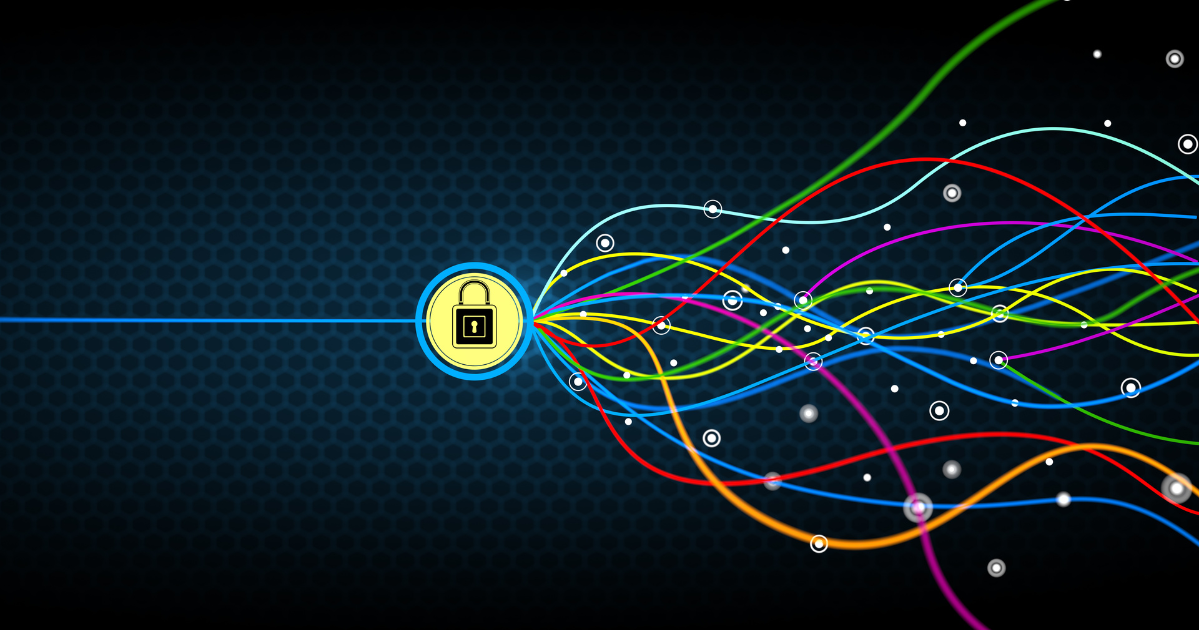
by Rebeca | Jun 11, 2024 | soffid, trends
In today’s digital world, securing access to corporate resources is not just a necessity but a strategic asset that can dictate the success of a business. Effective Access Management (AM) goes beyond simple authentication processes like two-factor authentication (2FA); it encompasses a holistic approach to managing identities, access rights, and security policies. This guide outlines key metrics and strategies to elevate your AM maturity, ensuring a secure, efficient, and compliant organizational environment.
Understanding Access Management Maturity
Access Management maturity is a critical component of a company’s overall cybersecurity posture. It measures how well a company can manage and secure user access across various platforms and systems. A mature AM system not only enhances security but also improves user experience and operational efficiency.
Key Metrics for Access Management Maturity
- Employee Onboarding Speed:
- Goal: Minimize the time it takes to grant new employees or contractors necessary access, thereby boosting productivity and user satisfaction.
- Metrics:
- Immediate access upon commencement.
- Access within one to two days.
- Access within a week.
- Inconsistent access provisioning times.
- Efficiency of De-provisioning:
- Goal: Ensure quick and secure revocation of access when an employee leaves, minimizing the risk of unauthorized access.
- Metrics:
- Immediate revocation upon departure.
- Revocation within days.
- Delayed or inconsistent revocation processes.
- Service Desk Efficiency:
- Goal: Evaluate the efficiency of the service desk in handling access-related requests and issues.
- Metrics:
- Fully automated with measurable service levels.
- Partial automation with manual interventions.
- Predominantly manual processes.
- Lack of a dedicated identity governance service desk.
- Risk Management in Role Assignment:
- Goal: Accurately manage and monitor critical roles to prevent unauthorized access and ensure compliance.
- Metrics:
- Consistent monitoring and timely adjustment of roles.
- Regular reviews and workflow-based role assignments.
- Ad hoc management and monitoring of critical roles.
- Poor awareness and management of role-based access risks.
- Audit and Compliance Readiness:
- Goal: Maintain detailed and actionable logs to track access changes and ensure compliance with regulations.
- Metrics:
- Real-time auditing with comprehensive change logs.
- Comprehensive but not real-time logs.
- Incomplete logs lacking detailed rationales.
- No auditing capability.
Strategies to Enhance AM Maturity
- Holistic Approach: Integrate AM practices with overall business operations to ensure alignment with business objectives and security policies.
- Continuous Improvement: Regularly assess and adjust AM strategies to adapt to new security challenges and technological advancements.
- Training and Awareness: Conduct ongoing training for all employees to foster a security-aware culture that understands and respects access protocols.
- Technology Investment: Invest in advanced AM solutions that offer robust security features, scalability, and user-friendly interfaces.
Elevating your Access Management maturity is not just about implementing technology but about integrating strategic, operational, and compliance goals into a cohesive system. By focusing on these key metrics and embracing a continuous improvement mindset, businesses can significantly enhance their security posture while supporting dynamic business needs. Dive into the detailed aspects of Access Management with Soffid and discover how our solutions can transform your security landscape.
Embrace these insights to advance your access management strategy, ensuring your organization remains secure, compliant, and efficient. If you’re looking to elevate your access management maturity, explore how Soffid IAM can support your goals.

by Rebeca | Jun 4, 2024 | soffid, trends
Assessing IGA Maturity: A Guide to Optimizing Identity Governance
In the rapidly evolving landscape of cybersecurity, understanding and effectively managing Identity Governance and Administration (IGA) is crucial. Yet, many organizations struggle to pinpoint the tangible benefits and outcomes associated with robust IGA practices. To bridge this gap, we need to focus on measurable metrics that clearly communicate the value of IGA in terms of operational efficiency, risk management, and compliance.
IGA Maturity Metrics: A Structured Approach
Determining the maturity of your IGA implementation involves evaluating several key aspects of your identity management processes. Here are five critical metrics to assess:
- Employee Onboarding Speed
- How quickly can your organization provision new employees or contractors with necessary access and resources? This metric is vital as it impacts productivity and initial user experience.
- Levels of Measurement:
- Immediate provisioning upon start.
- Provisioning within one or two days.
- Provisioning takes up to a week.
- Provisioning process is unclear and inconsistent.
- De-provisioning Efficiency
- When an employee leaves, how swiftly and securely does your organization revoke access to prevent unauthorized access?
- Levels of Measurement:
- Immediate revocation upon employee exit.
- Revocation occurs within days or weeks.
- Inconsistent de-provisioning across different systems.
- No formal process for notification or de-provisioning.
- Service Desk Effectiveness
- Evaluate how your service desk handles identity governance-related requests.
- Levels of Measurement:
- Fully automated service desk with SLA measurement.
- Automated processing with structured requests.
- Manual processing with some structured requests.
- No dedicated service desk for identity governance.
- Risk Management in Role Assignment
- How effectively does your organization manage and review critical roles and access rights?
- Levels of Measurement:
- Timely and consistent reviews of critical roles.
- Defined workflows for role assignment and removal.
- Identification and monitoring of critical roles.
- Lack of awareness or assessment of critical roles.
- Audit and Compliance
- Assess the extent and effectiveness of auditing identity changes and permissions.
- Levels of Measurement:
- Real-time auditing with detailed logs of who made changes and why.
- Complete logs available but not analyzed in real-time.
- Partial logs available without reasons for changes.
- No auditing information available.
Implementing the Metrics
To effectively use these metrics:
- Rate each area on a scale from 0 (least mature) to 4 (most mature) based on your current practices.
- Identify where your organization needs to be versus where it currently stands.
- Create a visual representation, such as a spider chart, to illustrate these gaps and help prioritize improvements.
Driving IGA Maturity Forward
Elevating the maturity of your IGA practices is not just about enhancing security; it’s about transforming identity governance from a backend necessity to a strategic asset that drives organizational efficiency and growth. By applying these metrics, organizations can gain clearer insights into their IGA practices, leading to better decision-making and more effective resource allocation.
Embrace these insights to enhance your IGA strategy, ensuring your organization remains secure, compliant, and efficient in managing identities.

by Rebeca | May 28, 2024 | Uncategorized
Empowering Digital Transformation
In the fast-paced realm of digital business, where cloud computing, big data, and the Internet of Things reign supreme, the need for robust security measures and streamlined productivity has never been more pressing.
Enter Soffid, a pioneering force in the realm of identity governance solutions. With a mission to secure digital experiences, maximize productivity, and minimize security risks, Soffid offers a comprehensive platform tailored to meet the diverse needs of modern businesses and institutions.
Mitigating Risks, Enhancing Security
One of the key concerns in digital business is the management of user identities and access privileges. Soffid addresses this challenge by providing a range of features aimed at mitigating IT-related risks.
Moreover, Soffid doesn’t just stop at security measures; it also enhances productivity through innovative features.
Simplicity and Innovation at the Core
At the heart of Soffid’s identity governance solutions lies a commitment to simplicity and innovation.
The core values of Soffid – global outlook, commitment, and teamwork – underpin its vision of becoming a leading vendor of identity governance solutions worldwide.
Leading the Charge in Digital Security and Productivity
In a world where digital transformation is the norm, Soffid stands as a beacon of reliability, innovation, and commitment, empowering businesses to embrace the opportunities of the digital age while safeguarding their most valuable assets – their data and identities.

by Rebeca | May 22, 2024 | Release, soffid
The challenges of cloud security are becoming increasingly prominent in a digitally interconnected world. With the growing adoption of cloud computing by both individuals and businesses, there is an urgent need to effectively address and manage these challenges to safeguard data and systems.
Collaborative Efforts for Enhanced Security
Cloud challenges are numerous and complex. In a world where cloud computing has become the backbone of technological infrastructure, it is essential to proactively and efficiently address these challenges. Cloud security encompasses a range of aspects, from data management to governance and legal compliance.
Cloud security is a shared concern between cloud service providers and customers. Providers must ensure the integrity and security of the infrastructure, while customers are responsible for protecting their data and systems within that infrastructure. It is a collaborative effort that requires a clear understanding of risks and proper implementation of security measures.
Empowering Security with Comprehensive Solutions
One fundamental aspect of cloud security is Identity and Access Management (IAM). Soffid, as a converged IAM solution, plays a crucial role by providing access management, identity governance, and Privileged Account Management (PAM) from a single platform. This allows organizations to effectively manage who has access to what resources, thereby reducing the risk of unauthorized access.
In addition to IAM, governance plays a vital role in cloud security. This involves establishing policies and procedures to prevent, detect, and mitigate threats. Soffid offers tools to assist in this process, enabling organizations to establish consistent security policies and enforce access controls.
Data retention planning (DR) and business continuity (BC) are also critical aspects of cloud security. Soffid provides capabilities to securely back up data and ensure continuous service availability, even in the event of disruptions or disasters.
Finally, legal compliance is an important consideration in cloud security. Organizations must comply with industry regulations and standards such as GDPR or HIPAA to protect data privacy and security. Soffid offers features to help organizations meet these requirements, such as data masking to protect user privacy.
Security is a complex challenge that requires a comprehensive approach. With solutions like Soffid, organizations can effectively manage key aspects of cloud security, including identity and access management, governance, data retention planning, and legal compliance.
By proactively addressing these challenges, organizations can ensure the security and protection of their data in the cloud.

by Rebeca | May 14, 2024 | trends
In today’s data-driven world, CEOs are constantly bombarded by a variety of metrics. From revenue figures to customer satisfaction scores and website traffic, all these metrics provide a snapshot of our company’s health. However, there’s one metric that often gets overlooked despite its immense impact on our bottom line: Identity and Access Management (IAM).
For too long, IAM has remained a misunderstood necessity, often relegated to the IT department and measured by vanity metrics such as “security score,” which fail to resonate with business leaders focused on growth. But what if a well-managed IAM program could be more? What if it could be a powerful driver of growth for your company?
From Padlock to Powerhouse: The New Frontier of IAM
Imagine an IAM program that goes beyond basic security. A program that streamlines operations, empowers your workforce, and fuels growth. This is the new frontier of IAM—one where it functions as a strategic asset, not just a technical cost center. According to Growth Market Reports, the global IAM market size was $5.5 billion in 2022 and is expected to reach $28.4 billion by 2031, indicating a 20% growth from 2023 to 2031.
Data-Driven Insights: The Key to Unlocking Value
Measuring the effectiveness of your IAM strategy and demonstrating its value in the business is the first step toward achieving maturity. Aligning business goals such as improving security, enhancing the user experience, ensuring regulatory compliance, or reducing operational costs with the IAM plan and setting key performance indicators (KPIs) helps prove the program’s effectiveness. Each goal requires specific KPIs. For example, if improving security is an objective, measure the reduction in unauthorized access incidents.
Actionable Insights: The Currency of Success
The key to unlocking IAM value lies in data. Modern IAM tools generate a wealth of information, but without proper analysis, it remains just raw data. By focusing on the right KPIs, we can translate this data into a compelling story that resonates with business leaders.
These KPIs are more than just numbers—they represent stories of efficiency gained, productivity unlocked, and risks mitigated. It is crucial to leverage the rich data streams within your IAM tools to paint a compelling picture. Additionally, translating “technical jargon” into business acumen can help explain how IAM aligns with strategic goals.
Most Meaningful KPIs
- Faster Onboarding/Offboarding: Reducing delays in getting new hires productive translates directly to increased revenue generation.
- Fewer Password Resets: Streamlining password management minimizes frustration and boosts employee productivity—every minute saved translates to tangible returns.
- Precise Access Controls: Granting the right access at the right time, every time, eliminates overprovisioning and underprovisioning, ensuring a smoother workflow and reducing costly errors.
- Seamless Authentication: A user-friendly login process keeps employees focused on their work, not battling login screens.
- Compliance Confidence: Meeting strict regulations and industry standards can protect your reputation and help you avoid costly fines.
- Happy And Productive Users: A user-friendly IAM experience fosters a positive work environment, leading to increased engagement.
- Mitigated Security Incidents: Every data breach averted is an opportunity to avoid costly downtime and reputational damage.
The Future of IAM: Growth Engine, Not Just a Security Shield
Let’s move beyond vanity metrics and embrace the true potential of IAM. It’s time to rewrite the narrative. IAM isn’t just a security shield but can also be a powerful growth engine. By leveraging data-driven insights and aligning with strategic business goals, we can unlock the true potential of IAM, empowering our workforce, streamlining operations, and driving sustainable growth. It’s about transforming IAM from a back-office function into a strategic asset that fuels our success. The time to act is now.






